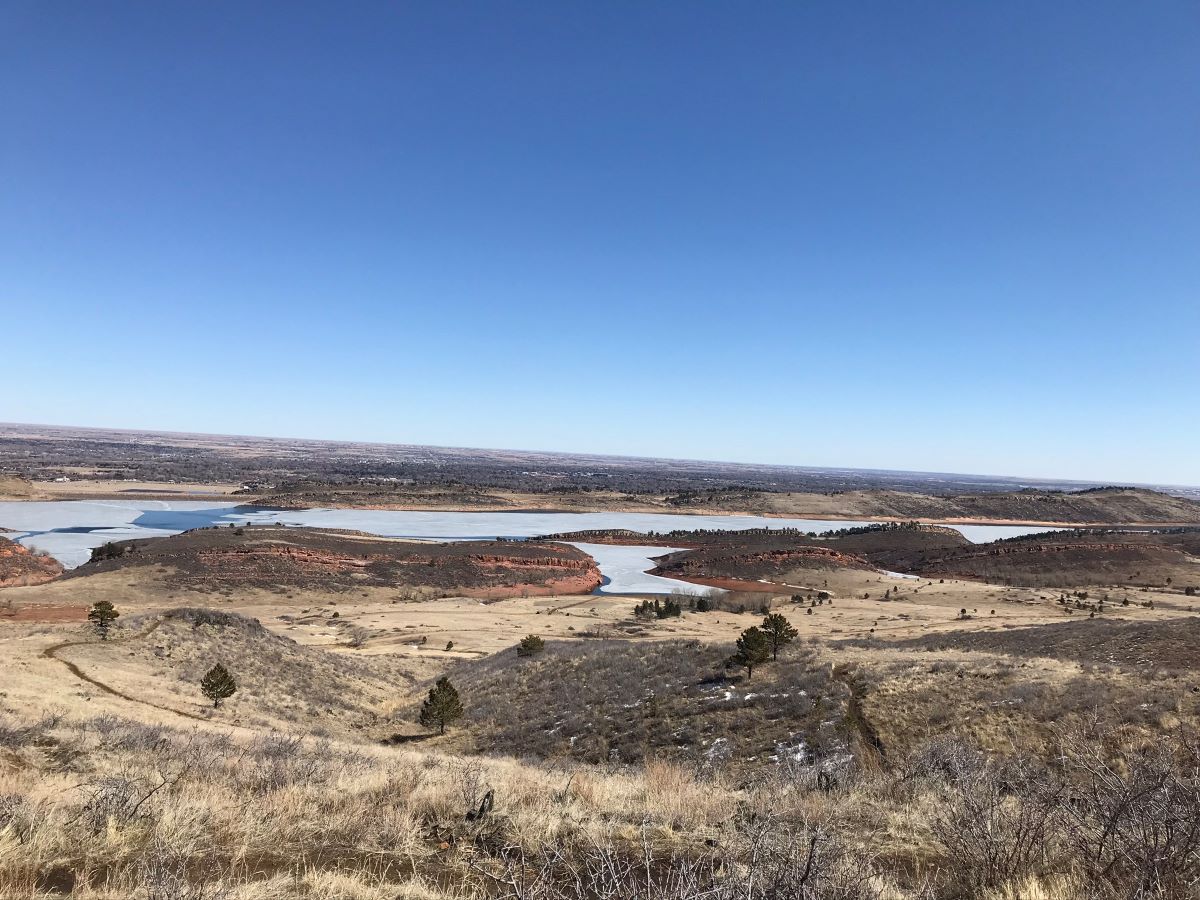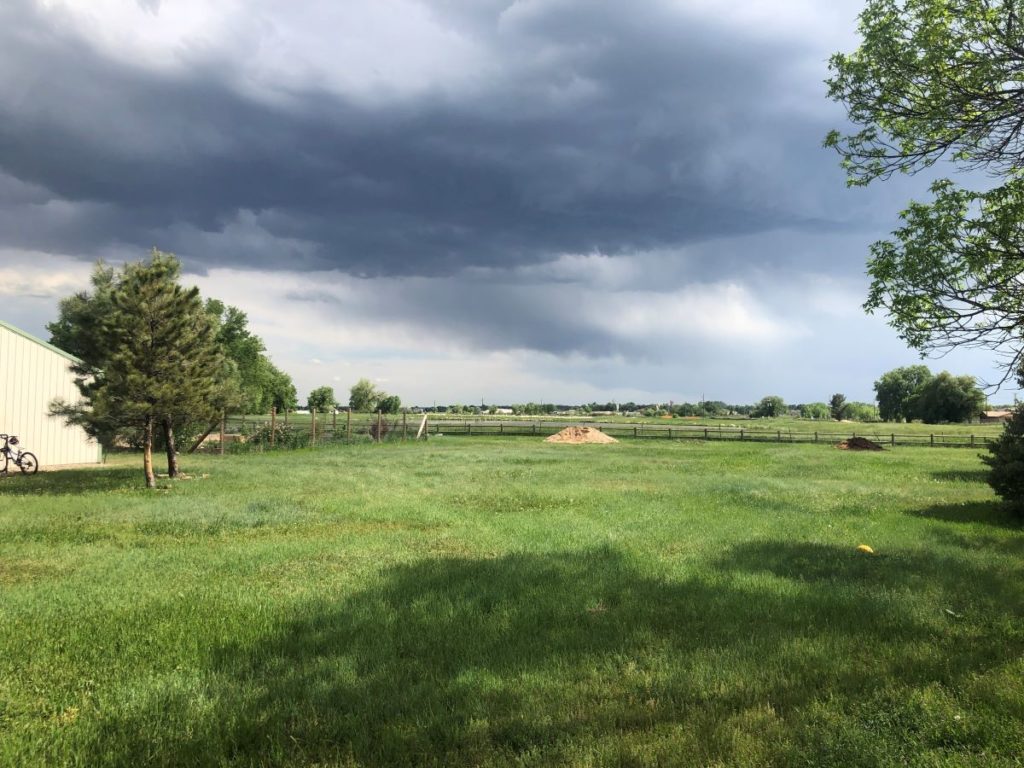As many of us know Colorado, is prone to strange weather patterns and shifts that can happen over a week, or even in a single day. Read this week’s blog post to learn about how the Front Range shapes Fort Collins weather patterns, what a La Niña winter means, and some fun activities about weather that you can do at home!
Colorado’s combination of mid latitude and higher elevation lead to a more arid and cooler climate. Fort Collins’ proximity to the foothills also leads to stronger winds, these winds are sometimes referred to as “chinook winds” when they are warm, and “bora winds” when they are cool and a strong front passing down the mountains. Temperature changes on the Front Range are also less extreme and variable than in the mountains and high country. Given these favorable weather patterns it is unsurprising that most of Colorado’s population lives in the Front Range.

Fort Collins stretches below the foothills of Lory State Park. Credit: Kristen Wilkinson
Global weather patterns also play a role in the weather that Fort Collins experiences, such as the El Niño Southern Oscillation cycle (ENSO). This ENSO cycle is a term used to describe the year to year ocean temperature changes in the Pacific Ocean. These are very complex interactions that have an effect on the global climate, to learn more watch this video playlist created by the National Oceanic and Atmospheric Administration (NOAA). The ENSO has three phases that span a cycle of 3-7 years, they are El Niño, Neutral, or La Niña.
El Niño is categorized as leading to a colder and wetter winter in the northern hemisphere, while La Niña is associated with a warmer and drier winter. In other parts of the world El Niño can be experienced in August and September. Not only that but for countries like Australia the effects are different; an El Niño winter leads to warmer temperatures and less precipitation. While the predicted effects of El Niño and La Niña are not guaranteed, this year is expected to be a La Niña year. This means Fort Collins will most likely see a warmer winter as well as a reduced snow pack.
If you would like to explore games related to climate, and how ocean currents affect our weather patterns check out some of these free interactive games from Legends of Learning.


